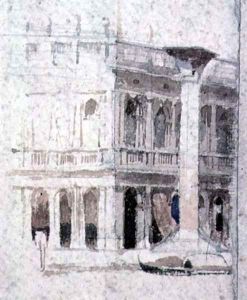Alfred George Stevens Paintings
Alfred George Stevens was a significant British sculptor and designer during the Victorian era, renowned for his monumental works and decorative art. Born on December 31, 1817, in Blandford Forum, Dorset, England, Stevens displayed an early talent for art, which was encouraged by his father, who was a house painter.
Stevens began his formal art education at the age of 13 when he was apprenticed to a local decorator. His skills developed quickly, and by the age of 16, he had moved to London to continue his education. There, he worked for the decorative firm of J.G. Crace, where he contributed to the interior decoration of Buckingham Palace.
In 1833, Stevens traveled to Italy to study the old masters and further his education in sculpture. He spent several years in Italy, most notably in Rome, where he was deeply influenced by Renaissance art, particularly the work of Michelangelo. It was this influence that shaped much of his later work. After his return to England in 1842, Stevens worked on various projects, including designs for silverwork, metalwork, and illustrations.
One of Stevens' most notable works is the monument to the Duke of Wellington at St Paul's Cathedral in London. Commissioned in 1856, the project was fraught with controversy and difficulties, largely due to disagreements with the authorities on the scale and design of the monument. Despite these challenges, Stevens continued to work on the monument until his death, though it was not completed until after he passed away.
Stevens' other works include designs for the British Museum and the decoration of Dorchester House in London. He was also a respected teacher, holding a position at the Government School of Design, later known as the Royal College of Art.
Alfred Stevens passed away on May 1, 1875, in London. His legacy is one of a dedicated and talented artist who contributed significantly to the Victorian aesthetic, bridging the gap between fine art and decorative design. Despite not being as well-known as some of his contemporaries, Stevens' work continues to be appreciated for its craftsmanship and design excellence.













